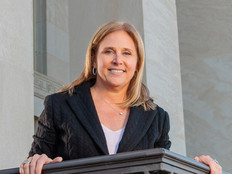Skeptical Agencies Signed On for Telework
About three-quarters of federal workers were still working remotely in September, according to a survey by the Government Business Council. Many, however, have jobs that do not allow them to work remotely, such as airport screeners, border patrol agents, healthcare workers and those who deal with classified information.
“In the past, we’ve seen resistance to telework because we have such a large population that doesn’t or can’t,” said Jasmine Avila, cybersecurity training and policy branch chief for U.S. Customs and Border Protection. “But we were able to transfer our administrative staff to 100 percent telework.”
CBP did it with the basic practices followed by all agencies: adding virtual private network capacity, laptops and team collaboration tools such as — in CBP’s case — Cisco Webex, she said. “It has shifted our attitude,” she added. “We’ve seen a lot of positivity come from senior leadership that hadn’t been as telework-friendly before.”
The challenges now are less technological than personal, many of the panelists said. “It’s hard to figure out how to adapt a leadership style to that remote space,” said Brian Whittaker, director of design and development for the Consumer Financial Protection Bureau. “The impromptu opportunities for discussion go away.”
“Work from home looks like fun, but it takes a lot of effort,” said Uchenna Moka-Solana, acting executive director of 18F, the digital services agency within the General Services Administration. “You forget about those lulls in the day — you have to remember to give people space to breathe.”







.png)



